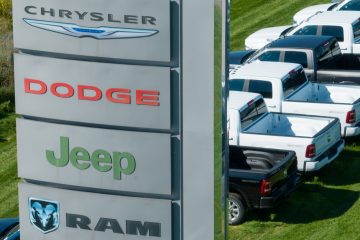With so many different makes and models out there, trying to figure out which car you want to buy can be overwhelming. This guide will outline a very simple process by which you can narrow down your selection to a few models that will best fit you and your lifestyle. You’ll also get some resources that could help you save thousands during the car buying process.
Figure Out What You Need
Before you start looking at cars, take the time to think about what your needs and priorities for your car are. You may already have an idea of what you want, but if you start by figuring out what you need, you’re going to end up with a car that better suits your lifestyle. Do you need space for groceries or a child car seat? Do you prioritize MPG over power or vice versa? Are you more interested in style or convenience? Taking time to consider your needs before you start looking at specific cars will give you an idea of where to start and will keep you from buying a sweet ride that turns into a headache when you take it home.
The biggest consideration you’ll have is what your budget is going to be. It’s best to figure out how much you can comfortably spend without having to borrow money. A car’s value typically decreases 15-20% in the first year, and 10% per year for the following four years. Borrowing money and taking on payments to buy something that’s going to drastically decrease in value over time is usually not a good plan. By buying within your budget, you can save yourself from making payments and put that money in the bank instead.
You will likely hear the argument that new cars make sense because they come with warranties and/or low dealership financing. The simple fact is, neither of these will come close to making up for the depreciation in the first few years, especially if you make sure to check your car out before buying. Of course, sometimes financing is still necessary; for example, say you need a car to commute to a new job but don’t yet have the savings to buy it outright. In those cases, it’s still important not to buy more than you need, as well as to avoid overpaying for the financing.
Get an Idea of What You Want
Once you’ve got an idea of your budget and what you need in a car, you could go check out some models in person at your local dealerships. Even if they don’t have the exact model year you’re interested in, a slightly newer or older version of the same model – even a brand new one if they don’t have a used model – should still give you a decent idea of what that car would be like to own. Models rarely change drastically year-to-year so there’s a good chance that a car that’s only a few years old (and a few thousand dollars cheaper) will be very similar to the ones you see at the new car lot. If you’ve got little to no idea of what sort of vehicle you’re looking for, going to a dealership gives you a great opportunity to see a wide range of comparable vehicles first hand, which should help narrow down what you’re looking for. Theory is great, but often just seeing a car in person or sitting in the driver’s seat will help you move it up, down, or entirely off your list.
At this point, you’re really just trying to get an idea of what’s available. Look around, even hop in the driver’s seat of a few cars and see how things feel, but no need to start taking test drives. It’s really a waste of time to start driving cars before you’ve narrowed it down to a few models and a year range you’re really interested in anyway. Plus, it’s respectful to the sellers not to take up their time and put miles on their vehicles before you’re a bit more serious. Feel free to ask them questions and such though; just be open about the fact that you’re only narrowing things down at this point and have no intention of buying immediately. Most good dealers will still be happy to help.
Since there’s only so much time you can spend at the dealership, you can also make similar comparisons online, although obviously it’s not quite as effective when you can’t actually plant yourself in the driver’s seat. You can get close though, with sites like TheCarConnection.com, which has extensive new car guides with tons of images, and in some cases video, of each model, almost like you’re taking a virtual test drive. You can also try YouTube and Google images to get an idea of what it’s like to be behind the wheel of that car.
You may want to seek some expert opinion when choosing a model. Our blog is a great place to find info on underrated models that offer a great value. The folks over at r/whatCarShoudlIBuy are always happy to give you opinions too, or at least to flame you for yours! Or for a fun way to get an idea of what to look for, check out this flow chart from Jalopnik.
Do Some Research
At this point, you’ll have a really solid idea of what you want, and you’ll likely even have a couple of models in mind. Now you’ll want to start looking for individual cars. You can start by researching individual models using our review search tool or by looking through CarGurus‘ used car guides. Also check out the new and used cars with the best score on TotalCarScore.
Once you know which models you’re looking for, search for used car listings online. Maybe you have the budget to buy one of those new cars you saw on the lot, but it’s still a good idea to look at used models. As we mentioned before, cars lose their value so fast that you would be saving thousands of dollars by buying the same car that’s only 2 or 3 years older. In fact, you could buy a 3 year old car every 3 years and still be far better off than buying a brand new car every 6 years! What’s not to love about more money in your pocket and upgrades twice as often? The AutoTempest used car search casts the widest possible net, giving you more used car listings in one place than any other site out there. That way, once you’ve narrowed down your ideal model, you can find plenty of that model with different mileages, options, colors, and of course prices, to choose from!
Now that you know what cars you’re looking for, it’s time to move to the next steps of car buying. You can get a head start by learning how to negotiate, how to get the best price on a used car, and how to get the best price from a dealership.
Header image courtesy of Wikimedia.
(Article continues below)




